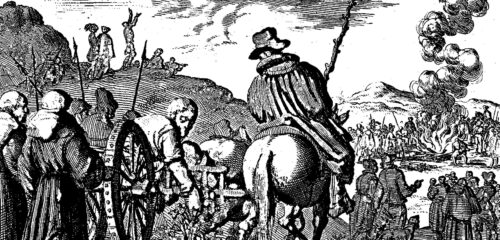Neue Perspektiven zu Adventismus und die Täuferbewegung: Symposium erfolgreich beendet
Das Symposium „Adventism and the Anabaptists“ (Adventismus und Täuferbewegung) hat wissenschaftliches Neuland betreten: Erstmals wurde diesem Thema eine internationale Tagung gewidmet. Vom 15. bis 18. April 2024 fand die Konferenz mit 16 renommierten Referenten an der Theologischen Hochschule Friedensau statt. Organisiert wurde sie vom Institut für adventistische Geschichte und Theologie, das damit bereits das fünfte Symposium dieser Art durchführte. Die Vortragenden kamen vor allem aus Deutschland und den USA sowie Dänemark, Italien, den Niederlanden, Russland und Tschechien.
Das Ergebnis des Symposiums ist, dass die Einflüsse täuferischer Kirchen auf Siebenten-Tags-Adventisten zwar indirekt, doch vielfältig und bemerkenswert sind. Adventisten stehen insbesondere den Mennoniten oft näher, als dies Vertretern beider Kirchen bewusst ist – sowohl im Hinblick auf Ethik und Lebensstil als auch in Bezug auf Bildungsverständnisse und kirchliches Leben sowie in vielen theologischen Überzeugungen. Durch ihre historischen Erfahrungen der Verfolgung und Vertreibung ernten täuferische Kirchen von Adventisten den größtmöglichen Respekt, zumal in manchen Regionen (historisch vor allem in Russland) viele Adventisten ursprünglich aus den Täuferkirchen stammten. Themen, bei denen die Freikirche der Siebenten-Tags-Adventisten aus der Geschichte der Täufer insbesondere lernen kann, sind das Engagement für den Frieden und der Einsatz für religiöse Freiheit durch die Bereitschaft zum Martyrium.
Die Vorträge werden in einem Tagungsband veröffentlicht, der noch 2024 erscheinen soll. Im Jahr 2025 erinnern Kirchen, die auf die Täuferbewegung des 16. Jahrhunderts zurückgehen oder ihre Prinzipien übernommen haben, an die Täufer und den Beginn ihrer Bewegung im Jahr 1525.
Das Institut für adventistische Geschichte und Theologie an der Theologischen Hochschule Friedensau dient der historischen und konfessionskundlichen Erforschung des Adventismus und der mit ihm verwandten Strömungen. Es ist die einzige wissenschaftliche Institution dieser Art in Europa.
Prof. Stefan Höschele, ThH Friedensau
